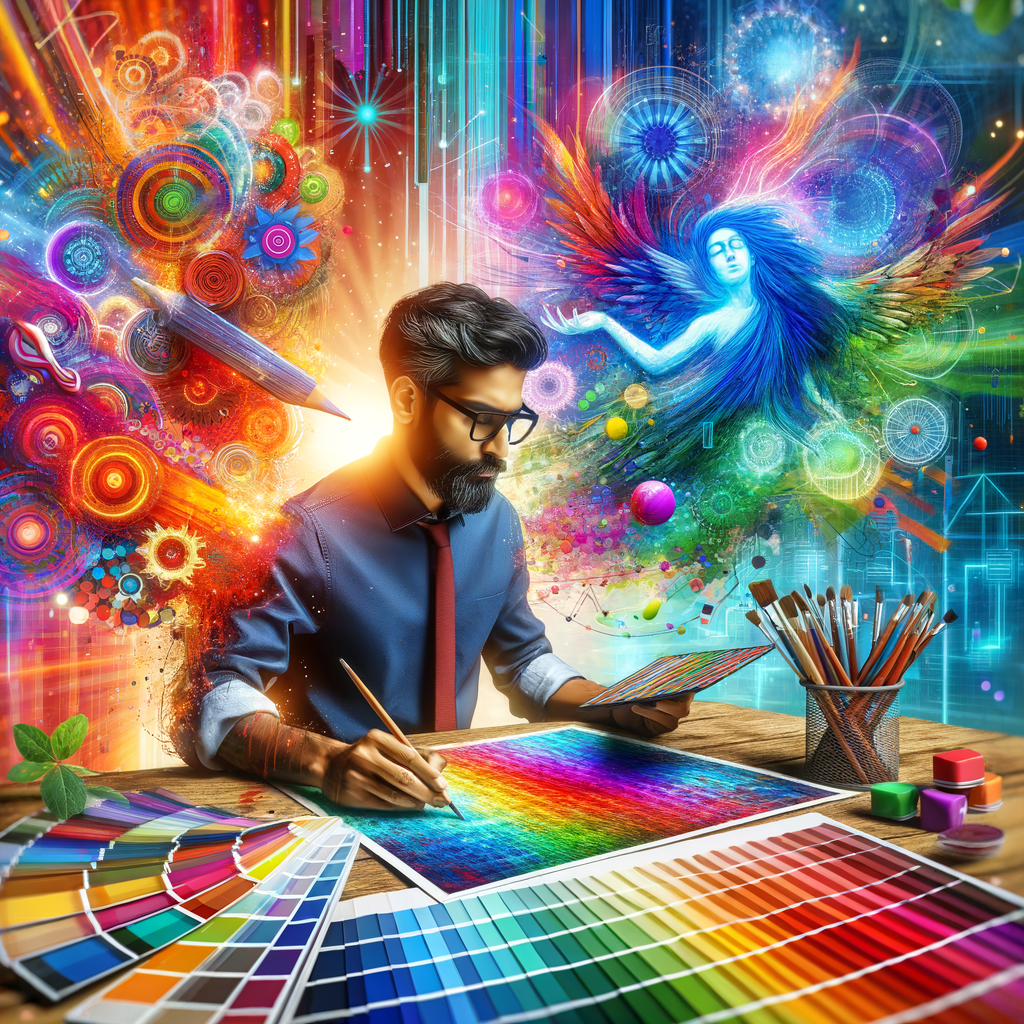
In the world of digital art, color plays a pivotal role in defining the mood, atmosphere, and message of your artwork. Mastering color theory is essential for artists who wish to elevate their work and provide a richer visual experience for their audience. This comprehensive guide will delve into the intricacies of color theory, offering valuable insights and practical techniques that can be applied to your digital canvases. Whether you’re a beginner or an experienced artist, understanding color theory will significantly enhance your artistic capabilities and allow you to communicate your ideas more effectively.
Color theory consists of a set of principles used to understand the color wheel, color interactions, and how colors can be effectively used in art to evoke emotions, create depth, and engage viewers. In this article, we will break down color theory into understandable sections, with an emphasis on how these concepts can be applied in digital art.
1. The Color Wheel
The color wheel is a fundamental tool for understanding color theory. Created by Isaac Newton, it organizes colors in a circle, showing the relationships between primary, secondary, and tertiary colors. Understanding the color wheel is essential for any artist as it serves as a roadmap for mixing colors and creating harmonious compositions.
- Primary Colors: These are colors that cannot be created by mixing other colors together. The primary colors are red, blue, and yellow.
- Secondary Colors: By mixing two primary colors, you can create secondary colors. These include green (blue + yellow), orange (red + yellow), and purple (red + blue).
- Tertiary Colors: These colors are formed by mixing a primary color with a secondary color, resulting in shades like red-orange and yellow-green.
2. Color Relationships
Understanding how colors relate to one another is crucial for creating color palettes that are aesthetically pleasing. The following color combinations are common approaches:
- Complementary Colors: Colors that are opposite each other on the color wheel (e.g., red and green) create a strong contrast when used together.
- Analogous Colors: These are colors that are next to each other on the color wheel (e.g., blue, blue-green, and green). They create a serene and comfortable design.
- Triadic Colors: This scheme involves three colors that are evenly spaced around the color wheel, which tends to be vibrant.
3. Warm vs Cool Colors
Colors can be categorized as warm or cool, which can influence the mood of your artwork:
- Warm Colors: These colors (reds, oranges, yellows) evoke feelings of warmth and energy.
- Cool Colors: Blues, greens, and violets tend to have a calming effect, bringing about feelings of tranquility and peace.
4. Psychological Effects of Color
Colors can evoke various emotions and reactions. Here are some common associations:
- Red: Passion, energy, danger
- Blue: Calmness, trust, sadness
- Yellow: Happiness, warmth, caution
This psychological aspect of color is critical for artists who want to convey a specific atmosphere or message in their work.
5. Creating a Color Palette
Establishing a color palette is an essential step in any digital artwork. Here are some tips:
- Limit Your Colors: Too many colors can overwhelm the viewer. Limit your palette to a few colors that work harmoniously.
- Use a Color Picker Tool: Digital art software often comes with color picker tools that can help you select precise colors from your reference images.
- Test Your Palette: Create swatches and test your palette on a small area of your canvas to see how the colors interact.
6. Color Mixing Techniques
Depending on your artwork, understanding color mixing techniques will help you create the desired effects:
- Subtracting Colors: This concept involves mixing pigments, where the resulting color gets darker.
- Additive Colors: In digital art, colors are created by mixing light, so using additive color mixing will create a lighter end-result.
7. Practice Makes Perfect
Like any skill, mastering color theory takes practice. Here are some practical exercises:
- Recreate Art: Study famous artworks and recreate them using your color palette to understand the artist’s choices.
- Create a Color Journal: Keep a journal of color combinations that inspire you and notes on how they affect your mood.
- Experiment: Don't be afraid to play with colors and see where your creativity takes you.
By applying these color theory principles, you can enhance the depth, emotion, and overall impact of your digital art. Keep exploring, practicing, and most importantly, have fun with color!

